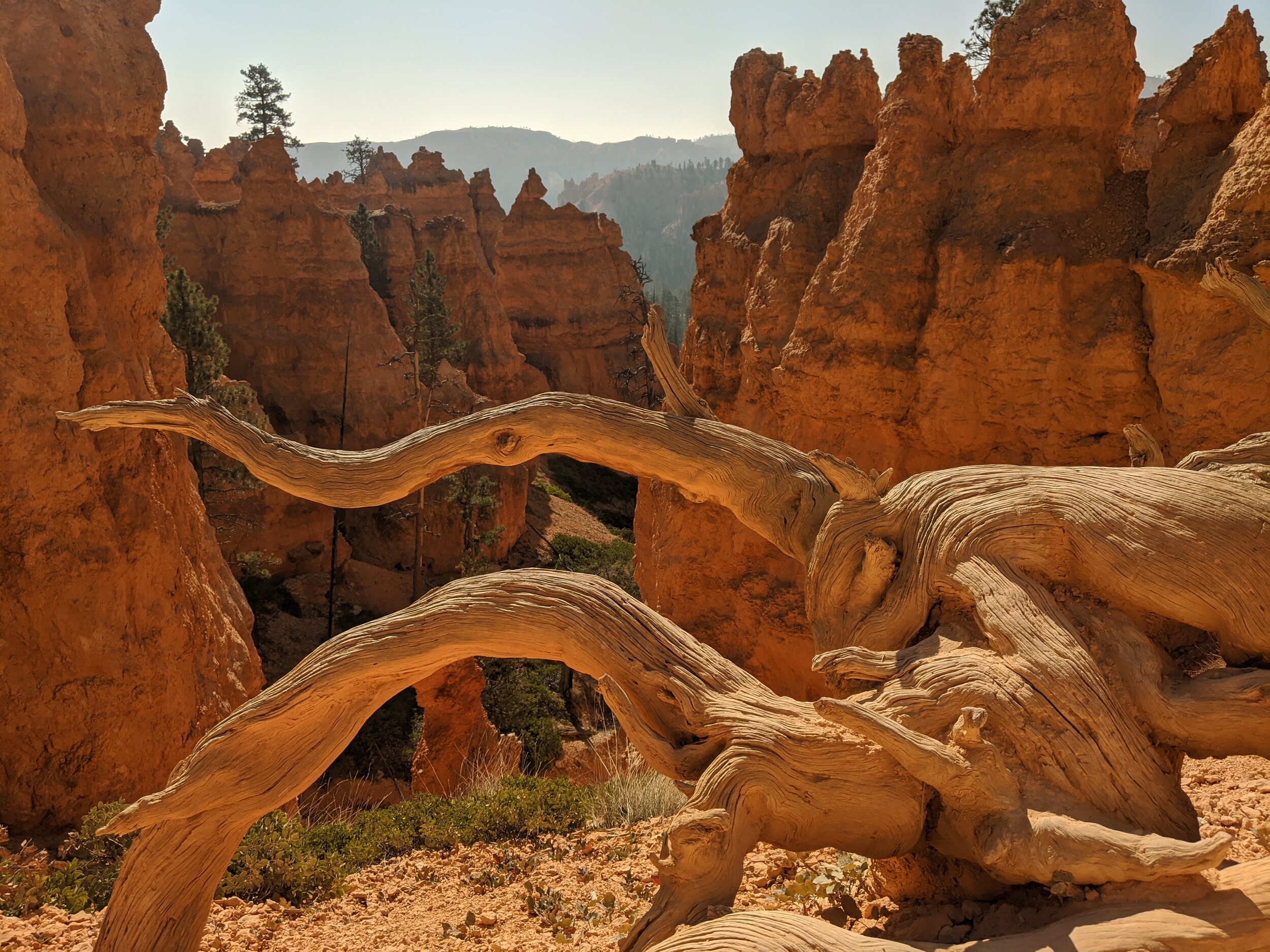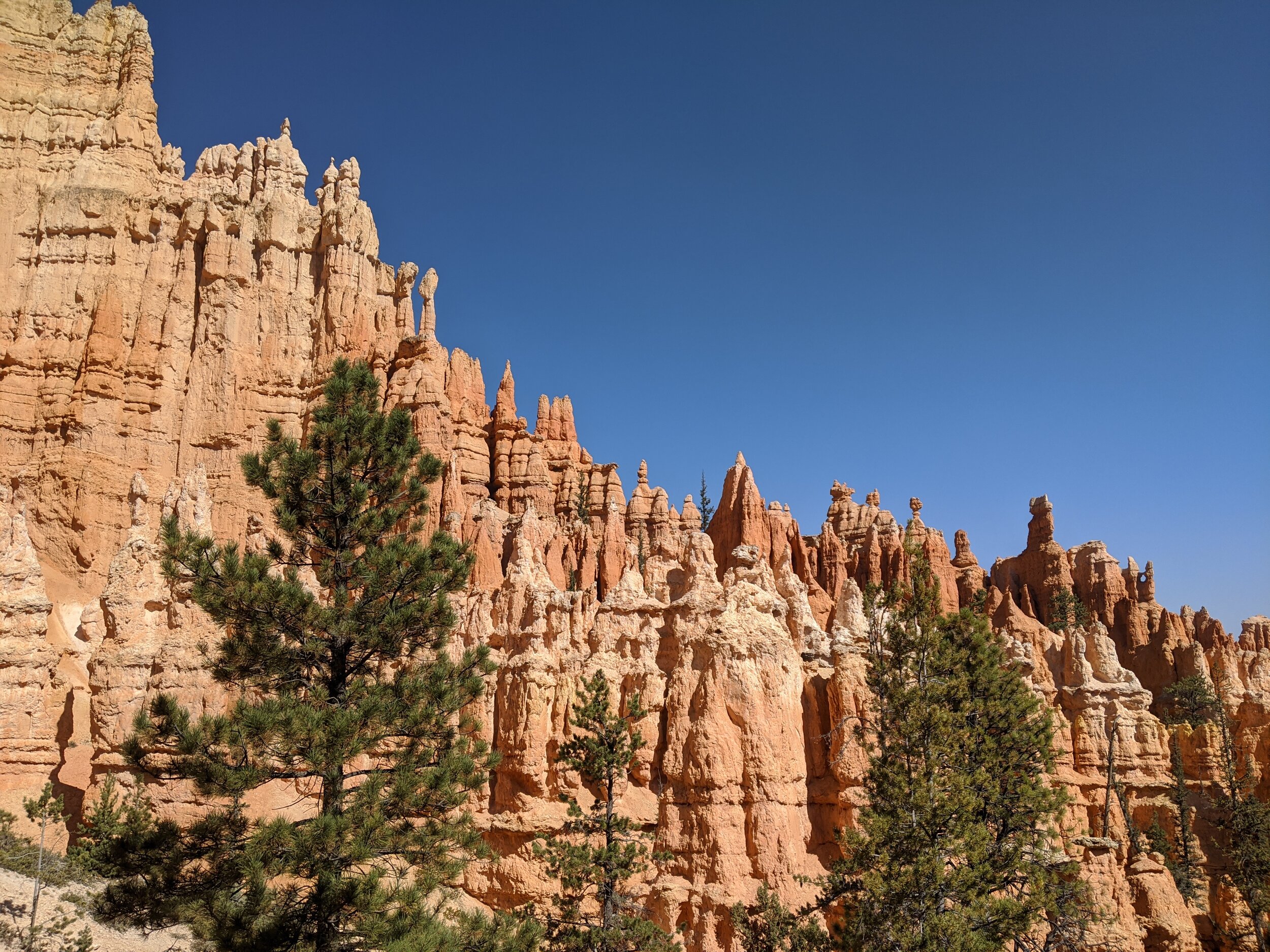The Wild, Wild West
“It feels like some sort of dystopia…” my expedition partner mused as we sat on the side of the road in the middle of rural America. Our lungs felt shallow and our throats burned from the excessive amount of forest fire smoke we had been inhaling. As we sat there next to a closed down café with racial graffiti sprayed across the plywood that now covered its shattered windows, I began to think the same.
Our views were typically of long roads weaving through desolate plains.
Previous to this moment of reflection, we began our goal of riding mountain bikes from the Canadian border to the Mexican border on what is now known as the “Western Wildlands Route”. This incredible route was developed two years prior by Bikepacking Roots, a non-profit organization dedicated to the bikepacking community, and brings a rider through the states of Montana, Idaho, Utah and Arizona for a total of 2,700 miles (4,345 kms). With the goal of keeping the bikes off pavement as much as possible, the path primarily takes forest service roads, 4x4 track, and meanders through the expansive public lands that the US has to offer. Being adjacent to the Great Divide, the elevation profile granted us a hefty 200,000 feet (60,000 meters) of climbing from border to border in the span of about two months. What we didn’t know was the type of socio-political climate we were about to experience throughout the journey. Nevertheless, we rode day in and day out, up and over passes and down through ravines. The natural beauty of the lands we rode through was unparalleled to many places I have been throughout the world, a fact that feeds my desire to continue efforts to help protect them.
My partner during this journey, Mike, was a friend I made while guiding together in Alaska a few years back. Since then he and I have had handfuls of climbing trips across the states, traveled to Southeast Asia, surfed in the foreign waters of Sri Lanka, and now completed the most challenging and longest bike journey either of us have set forth to accomplish. Mike had a fair bit more bikepacking experience than I, but when Covid brought my guiding season to a stand still and I received a phone call asking to partner up for the expedition, it was illogical to say no. Ex-military, former bodybuilder, and off the couch athlete-level climber/runner/biker, Mike is also a traveling English teacher and fluent speaker of Turkish. Jacks of all trades, masters of none, we tend to be a great duo. So we decided to give employment efforts a rest, pack up the bikes, and fly to the northern border.
Given the USA is such a large country, you can find almost any ecological environment within its boundaries. From temperate coastal rainforests and high deserts, to alpine rock and ice, only a few hours of driving can take you through them all. From camping in -7ºC at night, to riding at 37ºC during the day, we had to pack for nearly all climates. Riding mountain bikes that weighed about 45kgs completely loaded, we were tested in our ability to sustain relentless climbs as well as a lack of water in brutally dry heat. We decided to go with fully rigid steel frame bikes because of the simplicity in fixing them even with the sacrifice in weight. Given we want to use these bikes on an international trip in the future, we preferred something that would be easy to mend in very remote areas and that’ll happily carry a fair bit of gear without putting up a fuss.
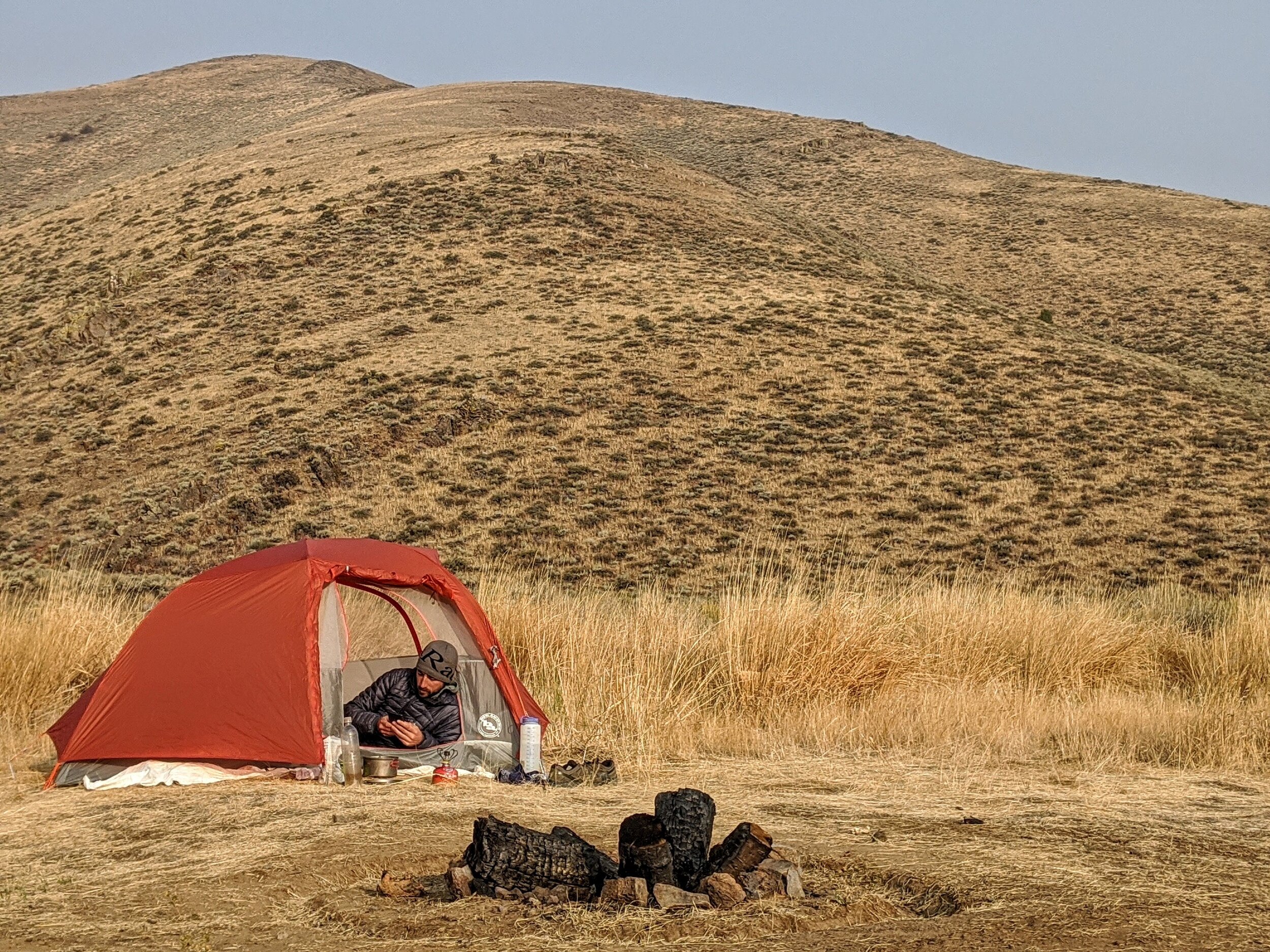

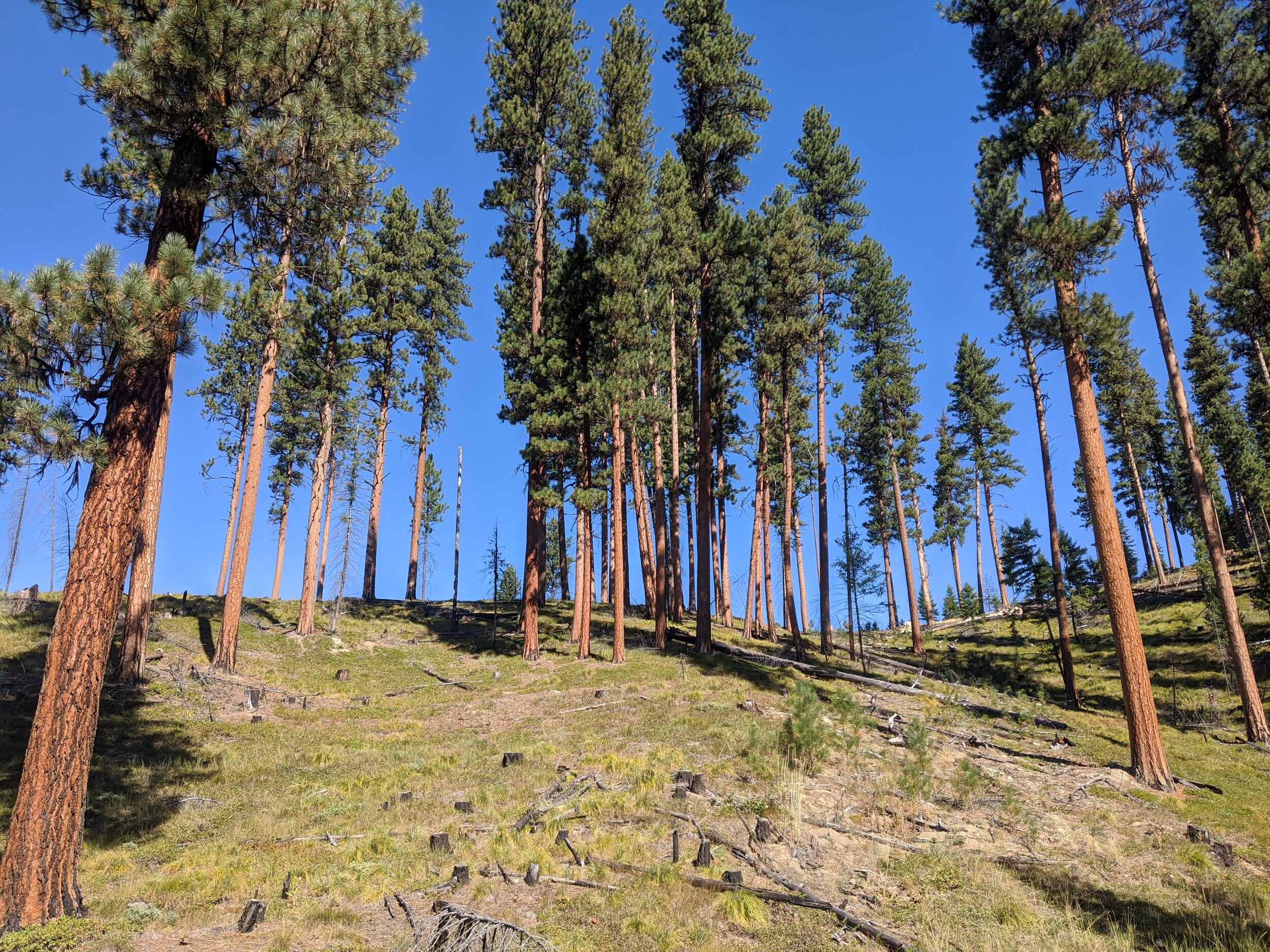
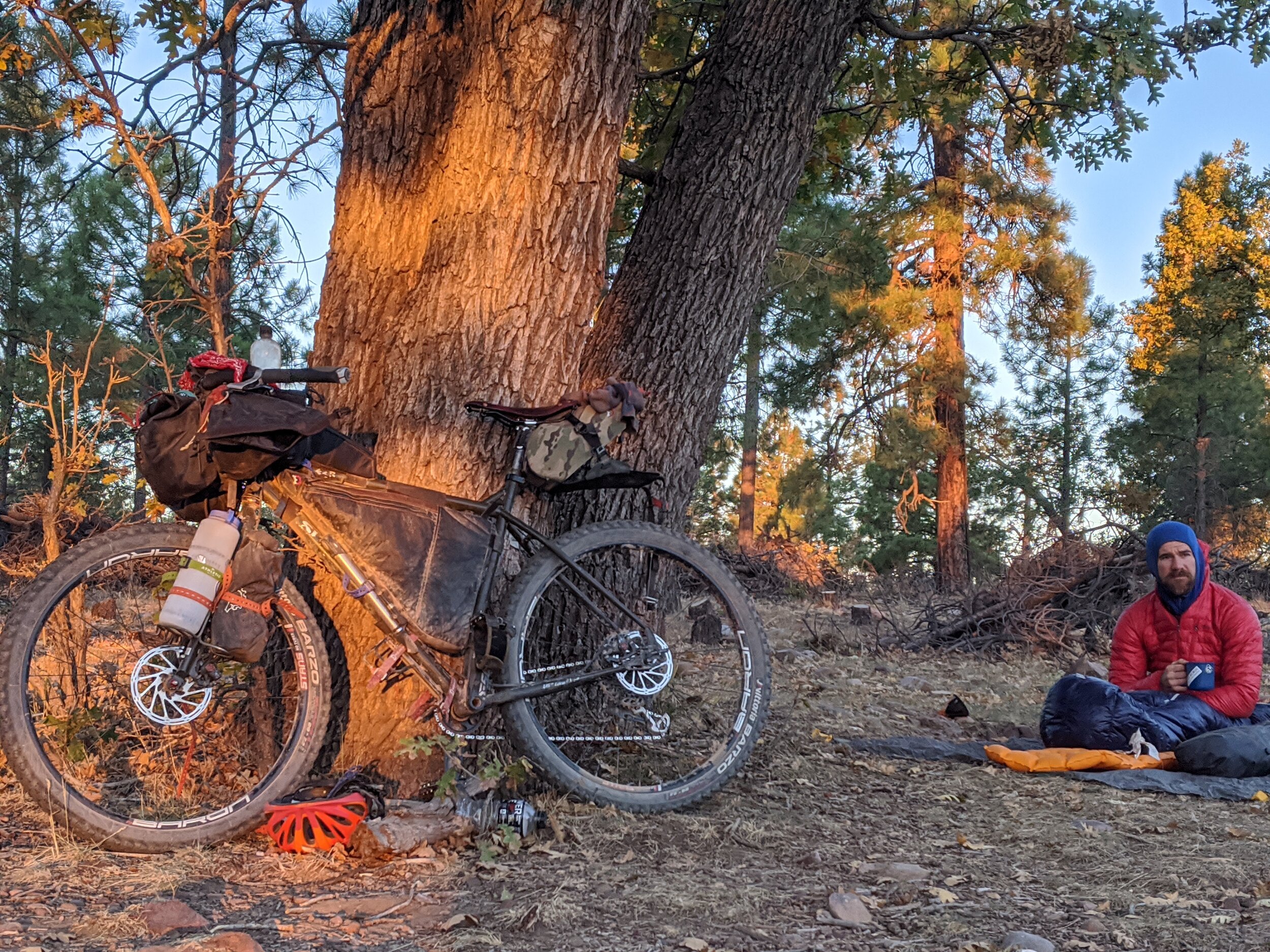
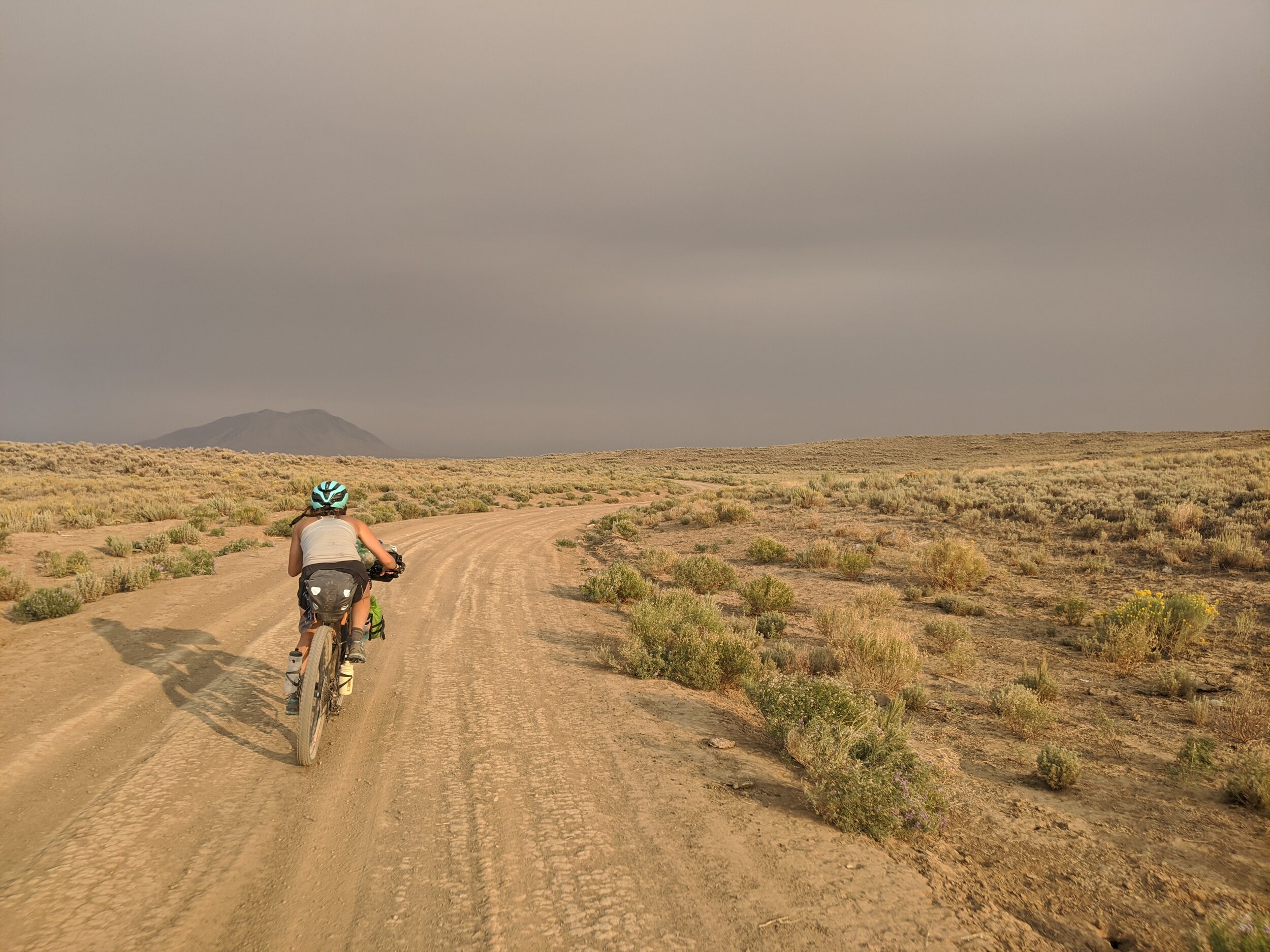
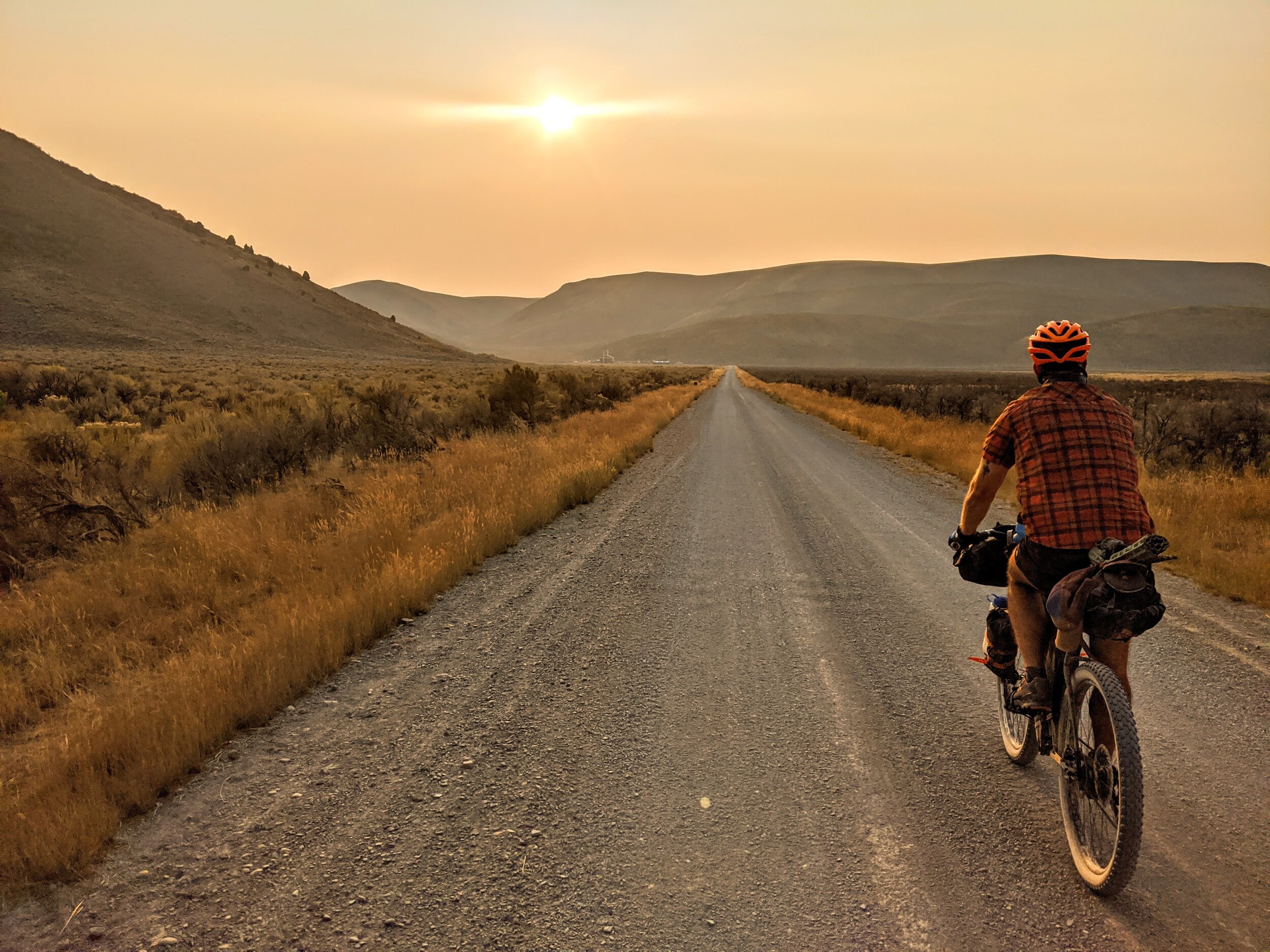
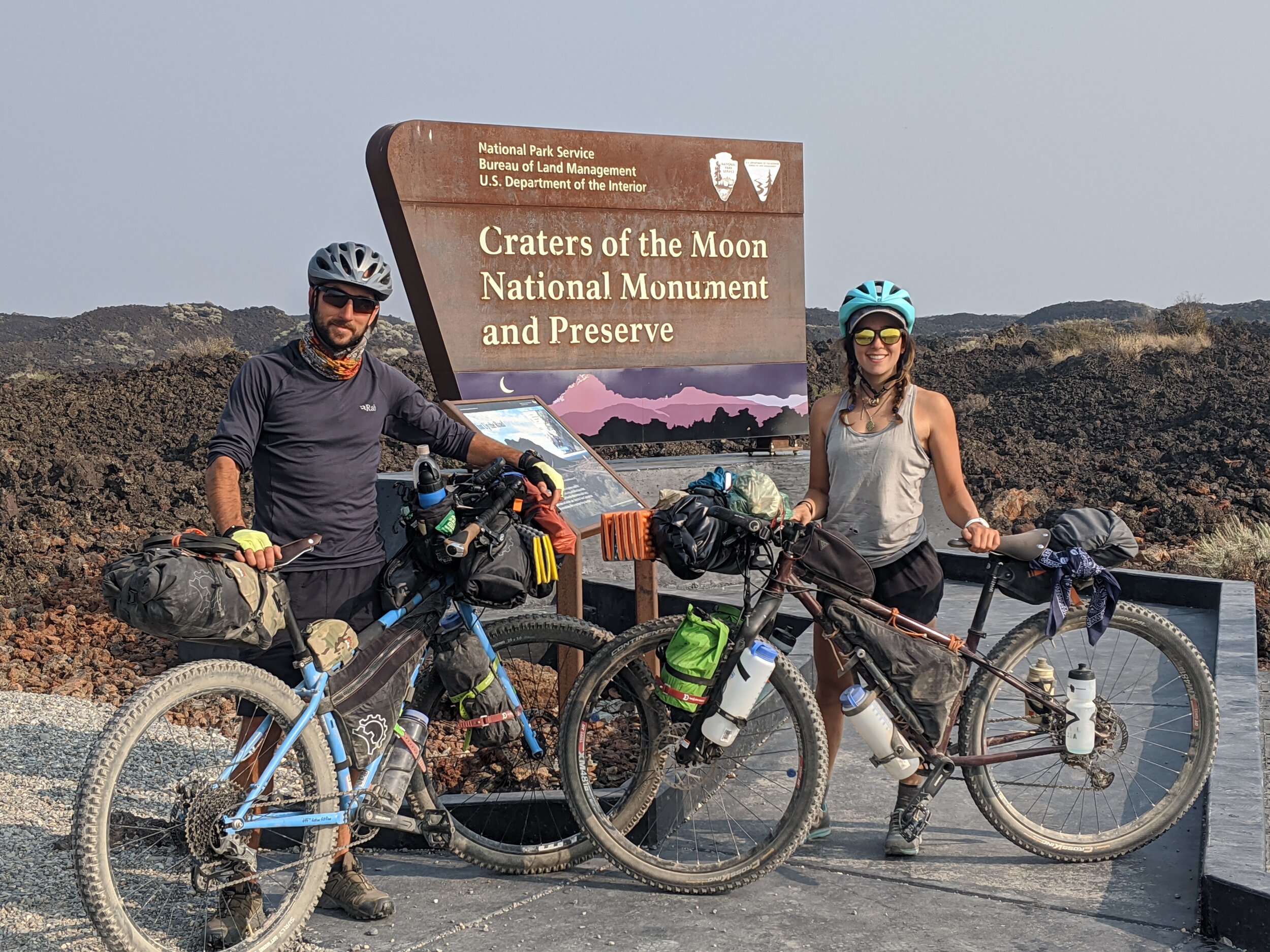
Landing in Montana and unpacking the bikes to ride away has still been one of the more pleasant and memorable parts of the trip. Putting the bikes together and cycling to the border with such a large unknown ahead of us didn’t even seem intimidating given our infinite excitement. As we began south, traversing the panhandle of Idaho, we passed dozens of massive rivers, streams, and lakes which made the arduous task of relentlessly climbing over mountains that much more palatable. Little did we know just how much we would miss these pristine water sources as we made our way south. While we continued down throughout the rest of Idaho, and its renowned wilderness areas, we also began to notice the sizable amount of burnt forest. With record breaking forest fires raging to the west of us, it was a somber reality check about the dangers of a dry and arid season in the remote backcountry. Fortunately, the fires never managed to reach far enough east to put us in any real danger, but small local fires did create some interesting logistics as we had to navigate around them. The only real issue we had to confront was the air quality. As California, Oregon, and Washington burned, the smoke carried over produced incredibly unhealthy air to the extent that we had to stop riding for a few days and wear damp masks when we managed to continue. Still, our respiratory systems took a hit and it became very difficult to put down substantial miles each day. As a message from a friend made us aware of the fires now burning east in Colorado and parts of Wyoming, we felt a bit trapped. Fortunately, however, the smoke eventually cleared due to changing winds and the fires on both sides contained due to the massive efforts of wildland firefighters. We trudged on south, even managing to log my first “century”, or 100 mile day, while riding through the Snake River Plains.
A well earned rest up high.
Somewhere in Northern Idaho, a friend of Mike’s decided to join us for as long as she could ride given her schedule. An avid cyclist, Claire works at a bike shop in Wisconsin and managed to take some time off to squeeze in 1,000 miles with us. Being nearly half Mike’s size and weight, she showed us both up while she crushed mountains and disappeared down straightaways. Having the third person for a bit of the journey added a good dynamic to the trip. Bouncing ideas and stories off each other made camping fun, and we were able to discuss the differences we saw in each other’s bike setups and what seemed to work best. It’s unfortunate she wasn’t able to join for the rest of the trip because I think she would have enjoyed the Southwest, but it was good to have her join while she could. After all, too much time spent with only one expedition partner for months on end can make people a bit….cranky.
Entering into the state of Utah was akin to entering another country, an interesting quality that US states can sometimes produce. With a massive Mormon population, there are strict alcohol laws, and particular social norms such as people wearing early 20th century attire. Of course this wasn’t the case everywhere, and it may be an exaggerated observation, but it always took me by surprise. The majority of the other people we encountered in Utah were some of the most athletic and outdoor enthusiastic people we’ve met on the journey. Not only does the state have exceptional mountain biking and skiing, it also boasts “The Big Five”, a collection of some of the most impressive National Parks the country contains. Red colored rock, 10,000 foot ridgelines, and aspen groves all changing with the season gave us a rollercoaster of color palettes and environments to ride through. We spent many nights in frigid temperatures as we made our way into autumn and continued to ride above 7,000 feet, only to sweat profusely as the sun beat down on us by mid day. As we exited the state, we were fortunate enough to also go through Bryce Canyon and Grand Staircase Escalante, two places that must not be missed if travelling through.
Next up was Arizona. I’m not sure what to say about this state because by this point I was either insane with expedition delirium or just simply tired of climbing every mountain since Canada. We had established that due to the inherent nature of biking, one would go incredibly slow for dozens of miles while making their way up a hill, only to splurge on the ecstasy of the equally distant downhill. However because the time was slow going up, and so fast going down, we spent more than 75% of our days on the saddle working uphill, which is probably why our minds felt just as worked as our bodies. Regardless, immediately after we entered the state of Arizona we were presented with our first dilemma. Because Covid-19 had shut down the Navajo Nation, we were not allowed to camp and forced to ride over one hundred miles via the busy highway to get through. Not only is riding in proximity to big vehicles at high speeds for extended durations dangerous, the deed must be done in one go. After riding that distance already once before, it seemed daunting to undertake that challenge again. The alternative was to ride a “shortcut” through the Grand Canyon, but as it’s illegal to ride a bicycle through the park, one must shuttle their bike around. Due to Covid-19 again, the shuttle services were closed, therefore our only options were to ride all the way around, or carry the bikes through the canyon.
And so the epic hike-a-bike journey was born.
It is 10,000 feet (3,000 meters) in total elevation change to the bottom of the Grand Canyon and out the other side, and about 24 miles (38.5 kms) across. We planned to camp at the bottom and do it in two days which proved to be the best decision we could have made. Two days felt like two weeks, but the excitement, disbelief and applause we received from the people in the canyon that day got us through it all. A little bit of guide ingenuity and some ski straps, we assembled our rigs and got through it. An incredible geographical feature, the Grand Canyon has a name well deserved and, again, should not be missed if travelling to that area. That blip of an ordeal mid journey and the incredible souls we met will be remembered for quite some time.

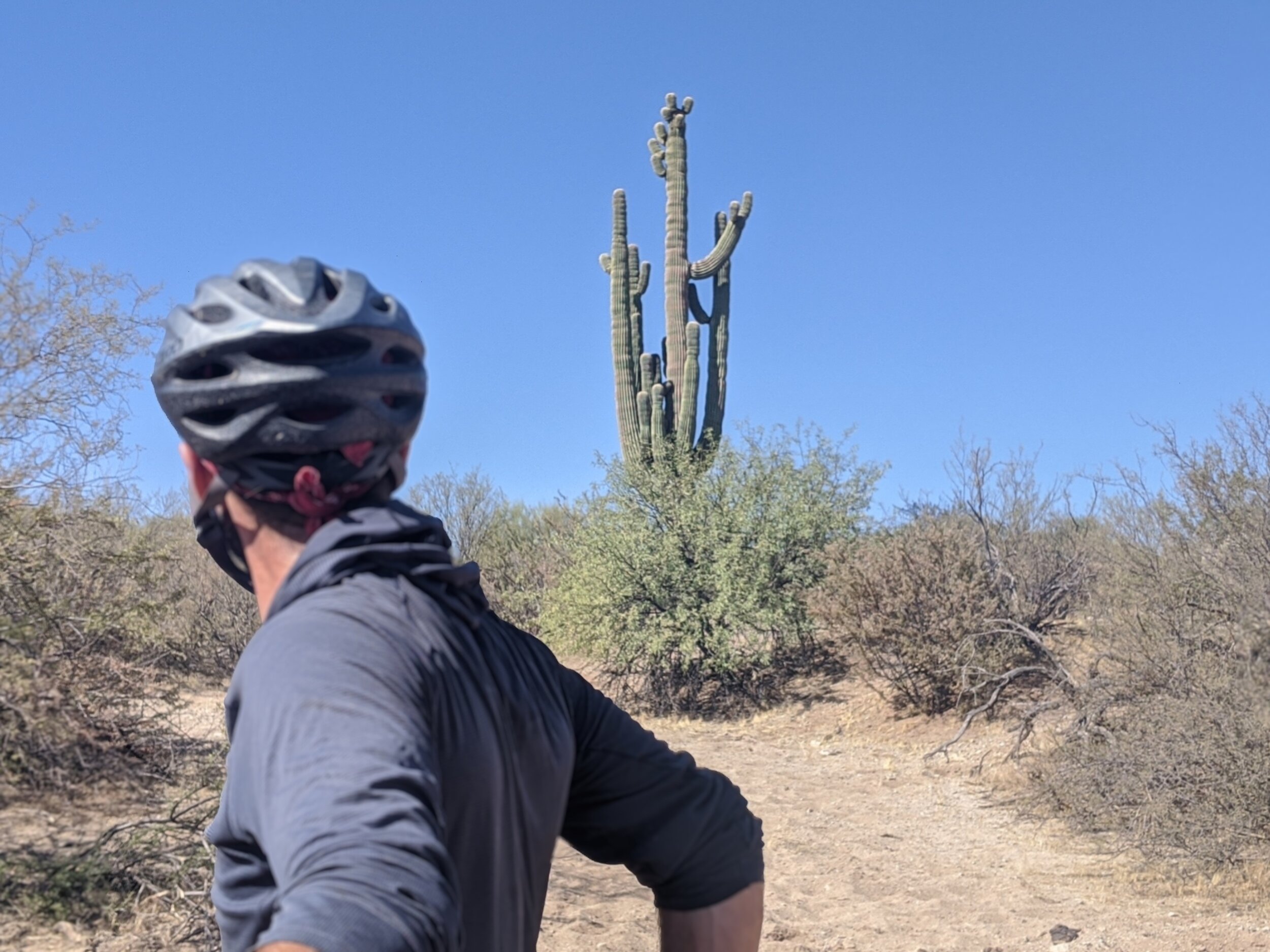
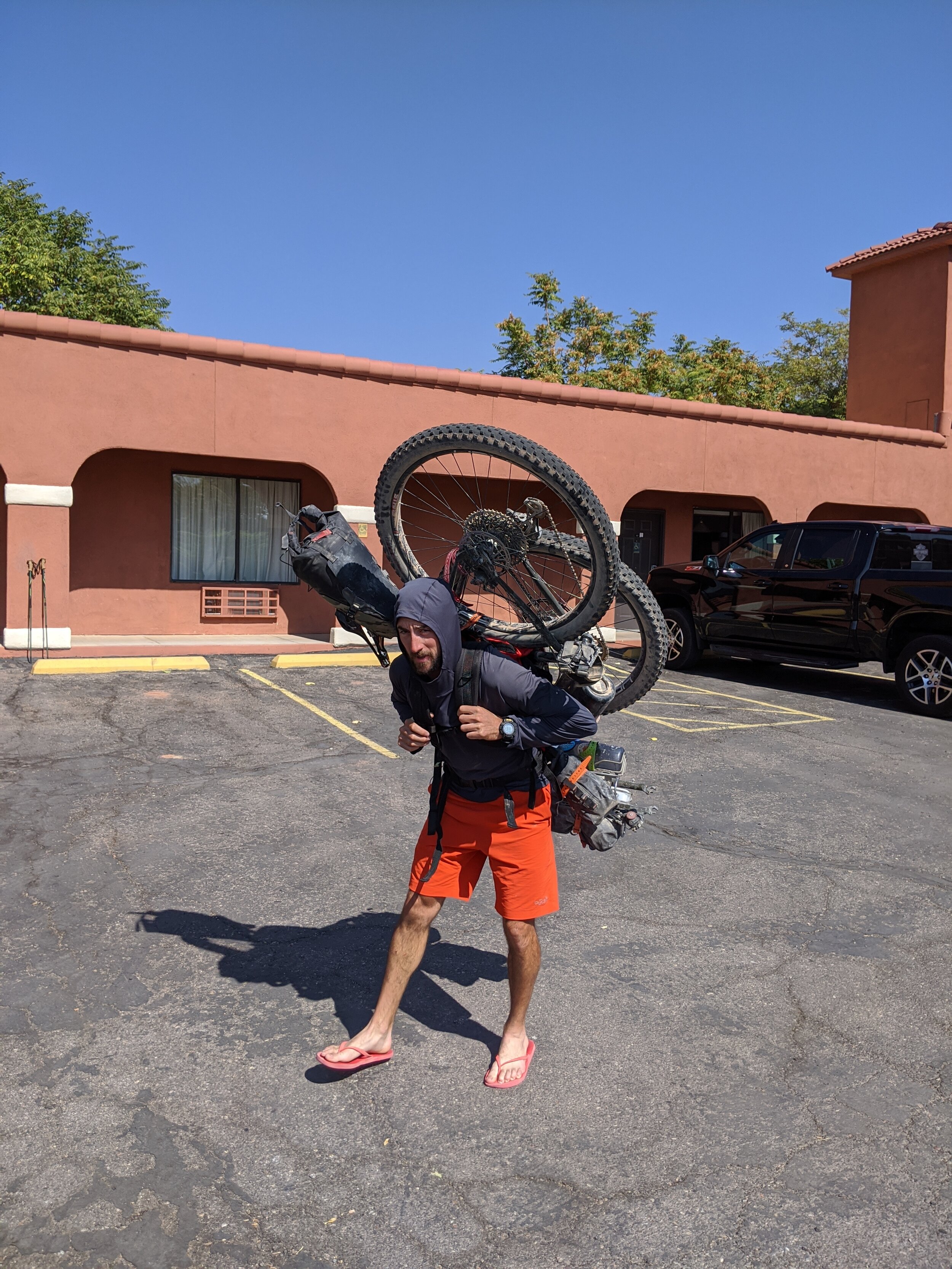
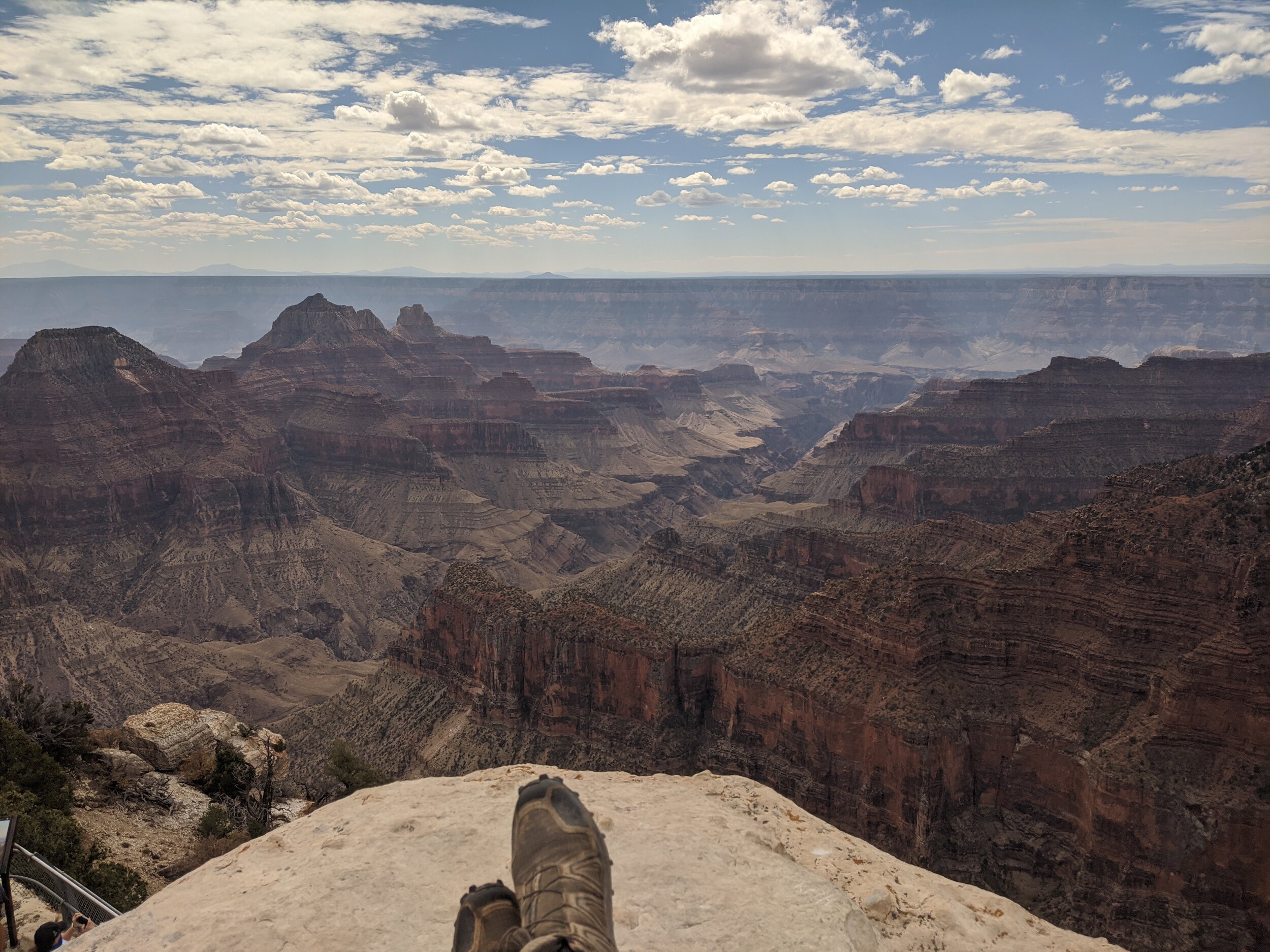
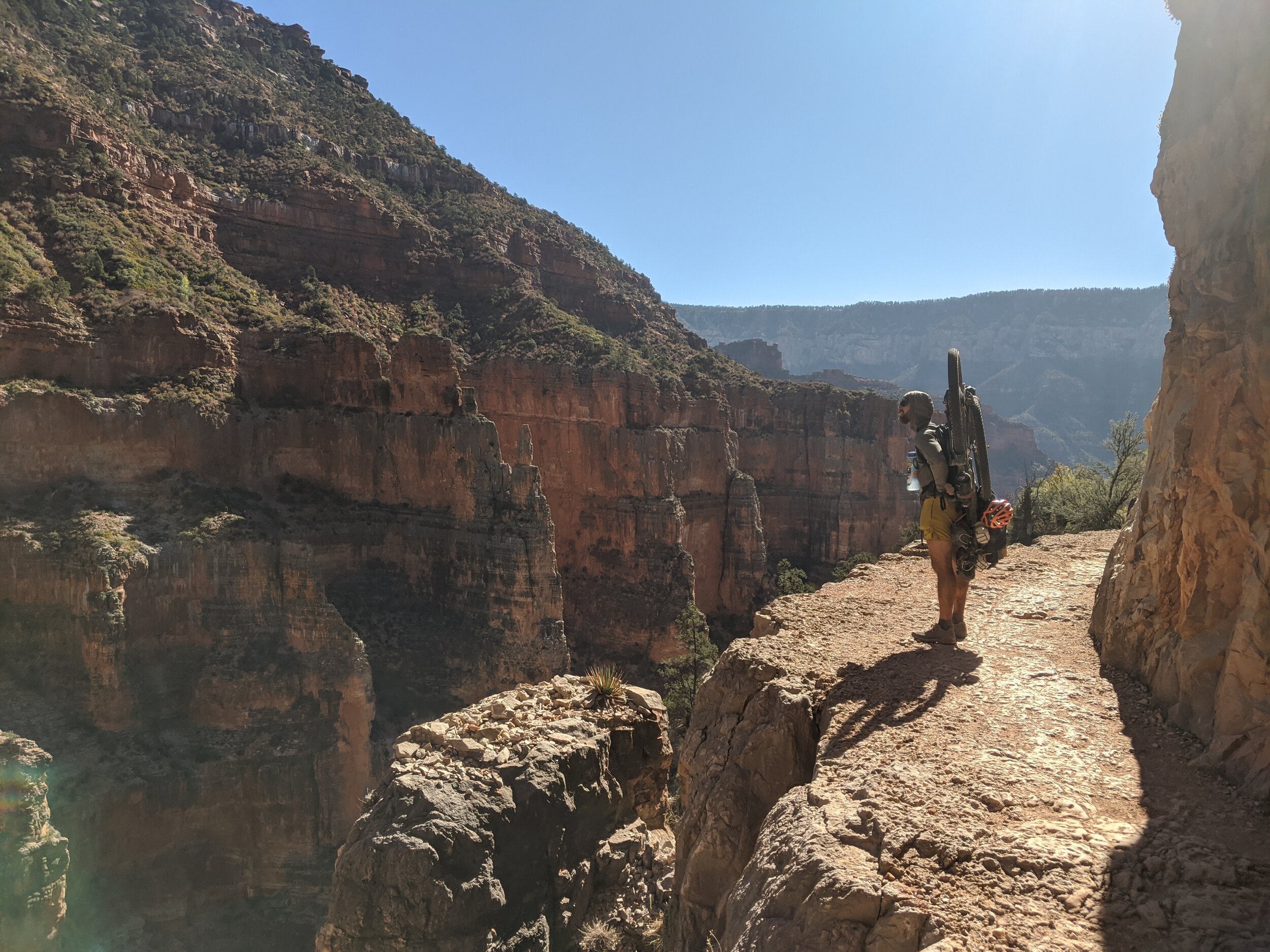
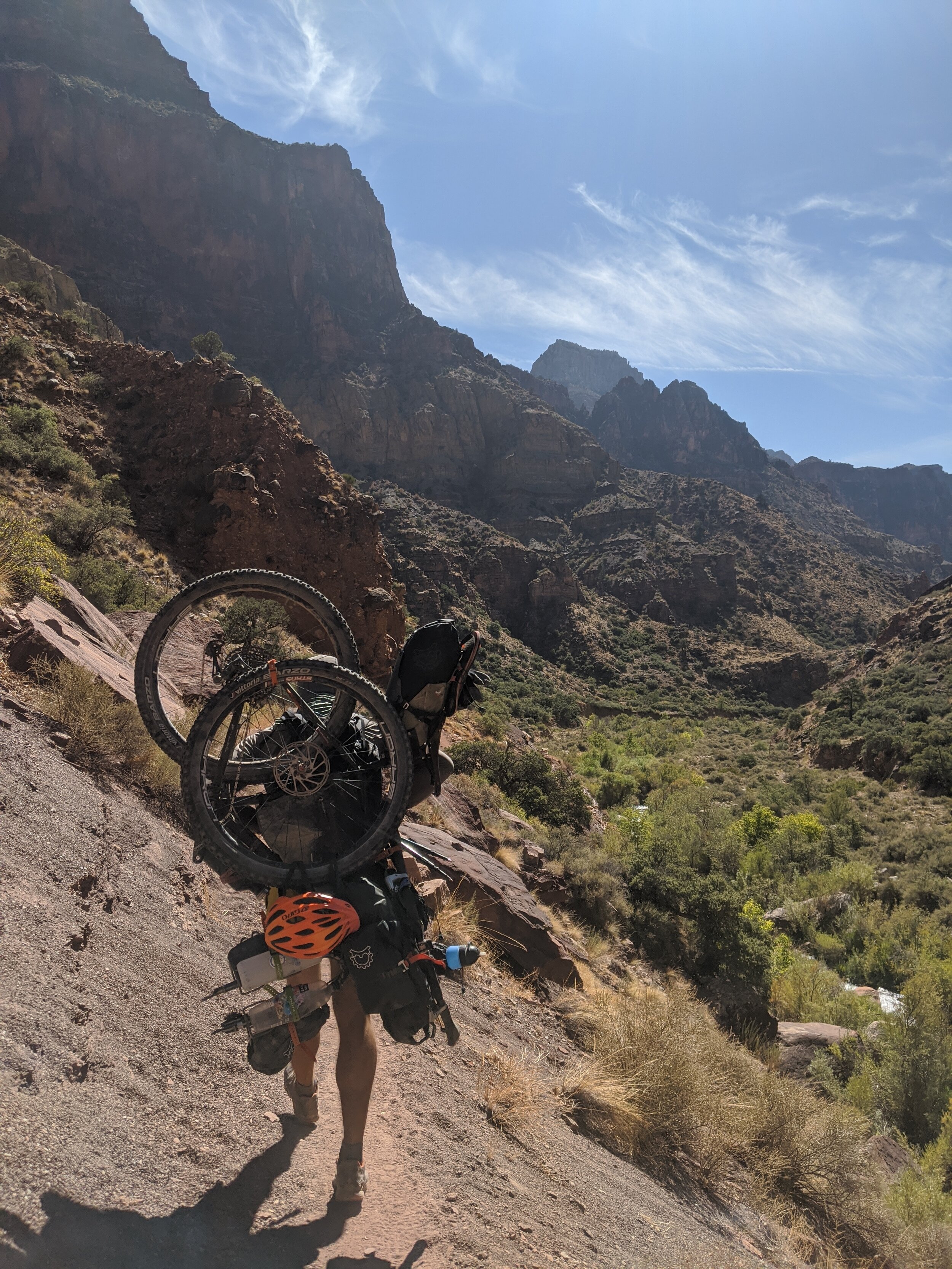
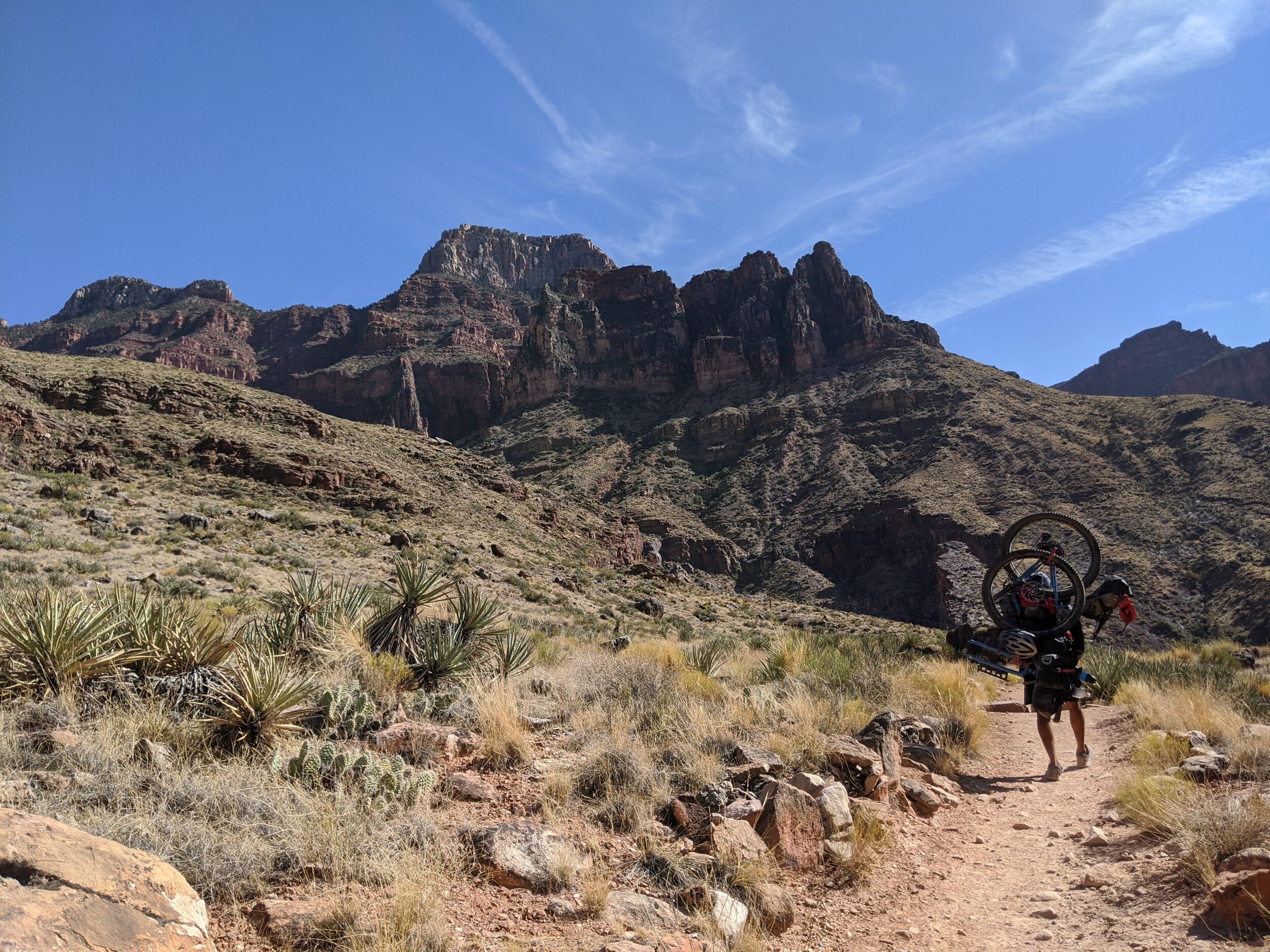
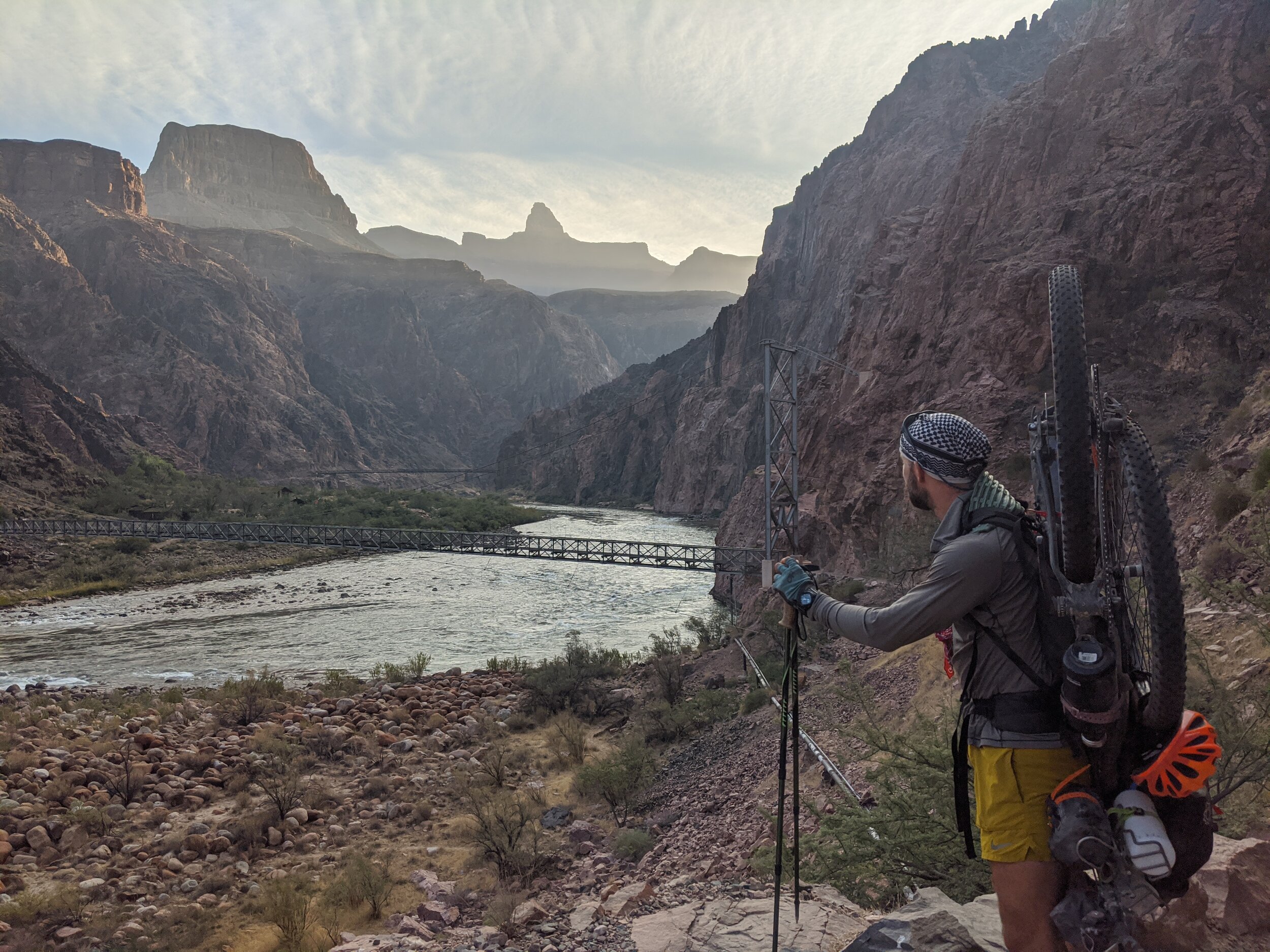
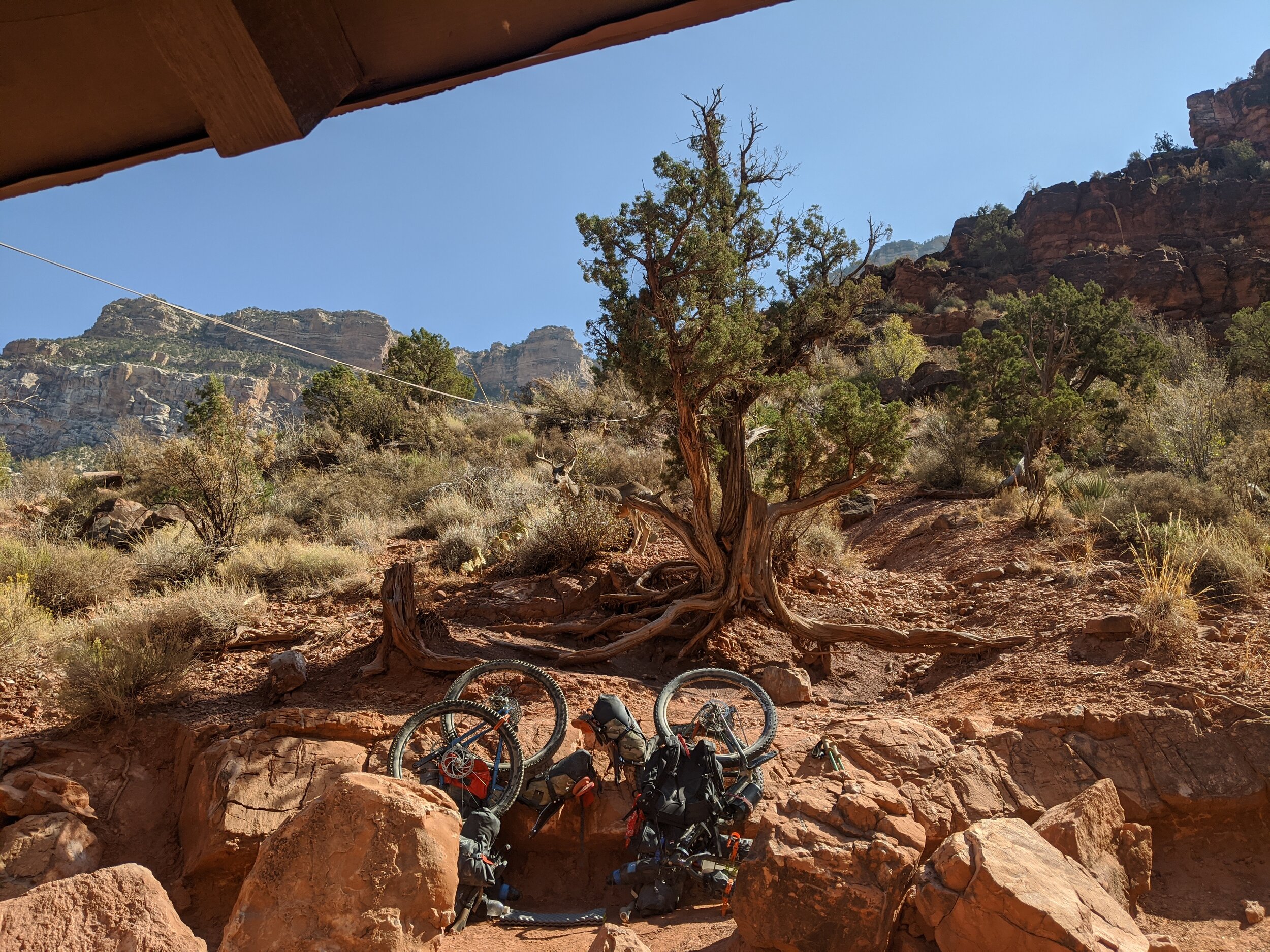
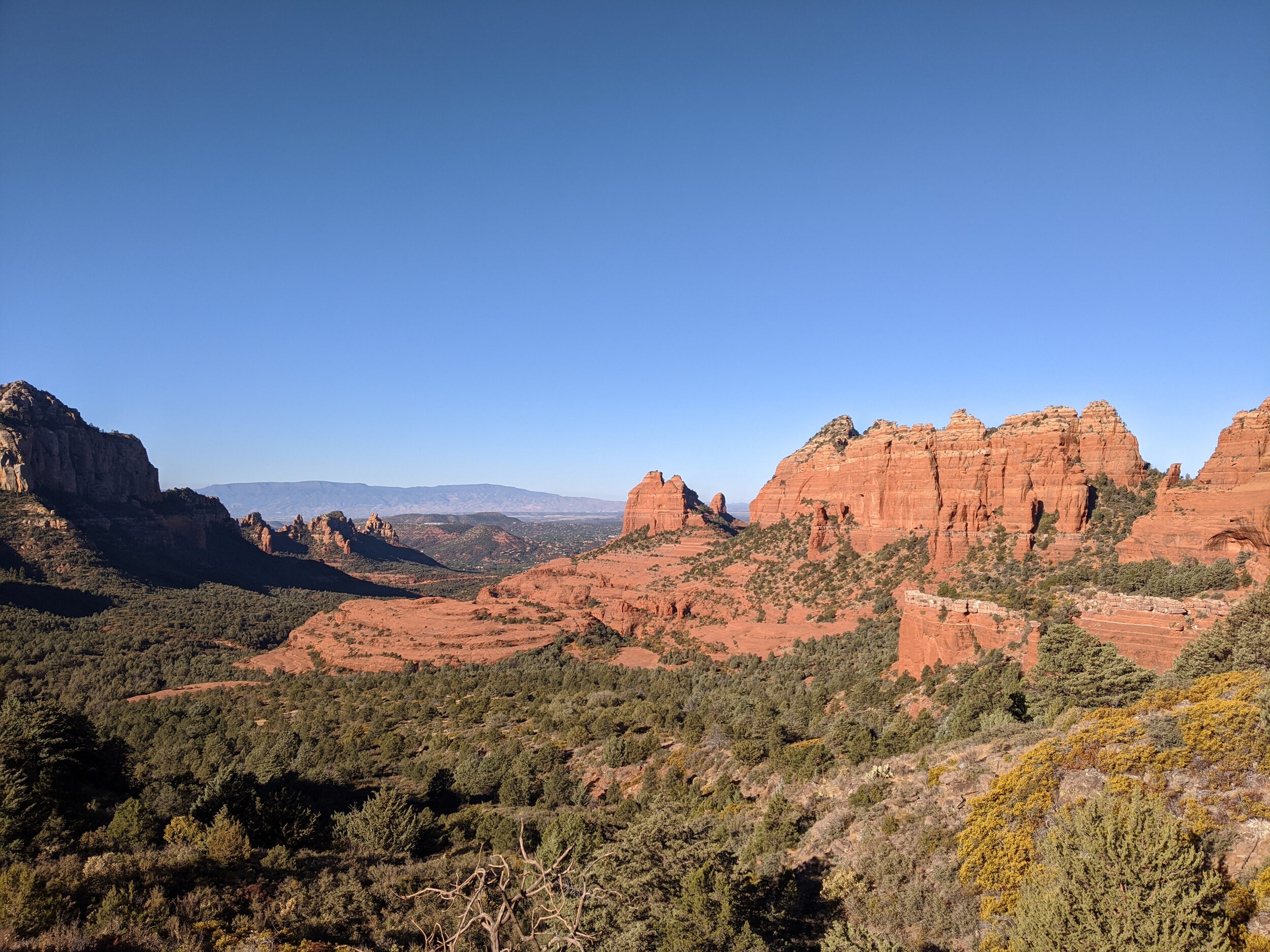
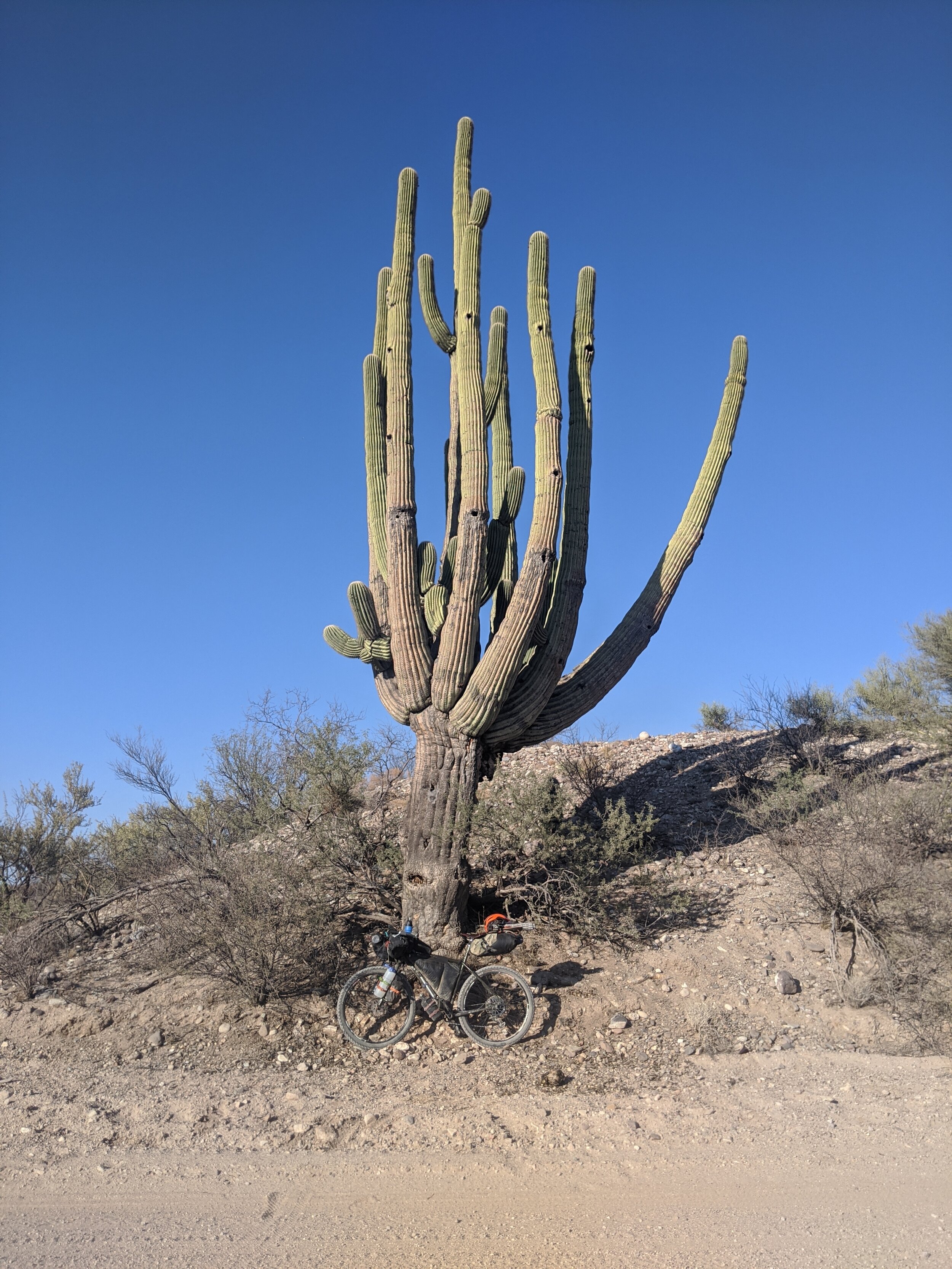
After the epic through the canyon, we made our way further south into the regions of low desert and cacti. Greeted by the giant and sacred Saguaro Cactus and blistering heat we knew we were near the border. Two more weeks of riding through rivers of sand, thorns, deer bones, wasps, snakes, scorpions, and a plethora of other desert friends, we finally made our way to the gigantic wall that separates the US from Mexico. A very sore sight indeed, it was an anti-climatic and raw ending to an otherwise whirlwind of a trip. We took our moments both separate and together, then turned around and made our way back to the nearest town for our pick up. The journey was over.
Besides our own abilities to endure the physical challenges of an expedition of this length and difficulty, the only true issues we managed to come across were things seemingly out of our control. Additionally, the pandemic shutdown many services in most towns creating a massive lack of supplies such as fuel and bike parts, as well as the health risk of the virus itself. Navigating these obstacles was nearly as fun and challenging as navigating the route itself.
In addition to these strategic dilemmas, we were also confronted with the harsh realities of rural America. “Trump 2020 - We don’t care about your feelings” or “All Lives Matter” signs were plastered across many lawns accompanied with confederate flags and racial graffiti. It’s not much of a surprise as these things have been displayed amongst social media platforms recently, but the fact remained that the division we saw between these small towns and the ones directly adjacent was simply shocking. No more than a day's ride away we would find a different town with completely polarizing ideals and political beliefs. Although all communities were very welcoming to us, with the election ramping up, riding through these areas truly showed the division we face in current day America.
Regardless, my partner Mike and I endured frigid and windy mountains up high and suffered through scorching plains down low. We rode through fields of cacti, rivers of sand, and roads so wash-boarded it would make your dentist cringe. Avoiding grizzly bears in the north and rattlesnakes in the south, this bikepacking adventure was unlike anything I’ve ever experienced and was indeed quite an epic journey I’ll never forget. With legs now akin to tree trunks and an upper body mass emaciated to pre-teen levels, it’s now time for a rest and strength training routine. Winter plans are right around the corner, and I’ve just added another method of mountain transport to the repertoire...









